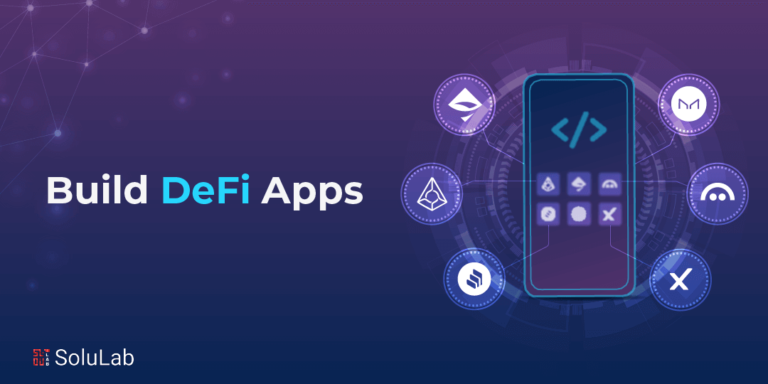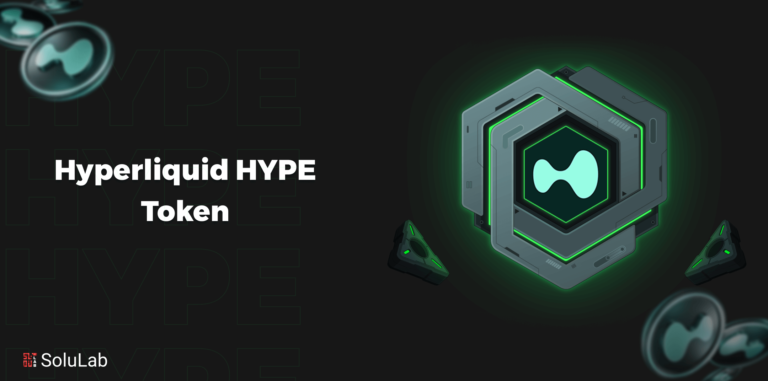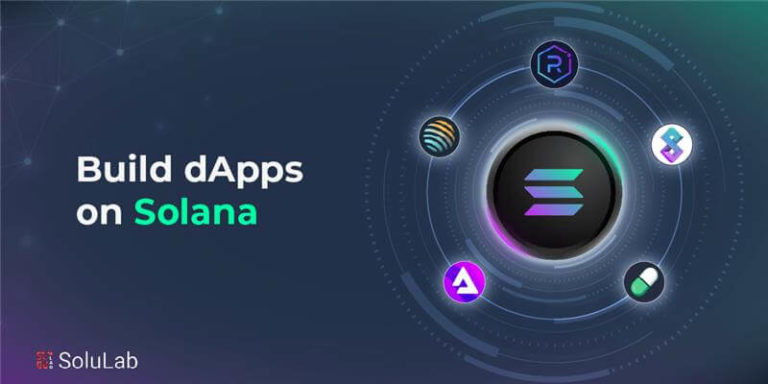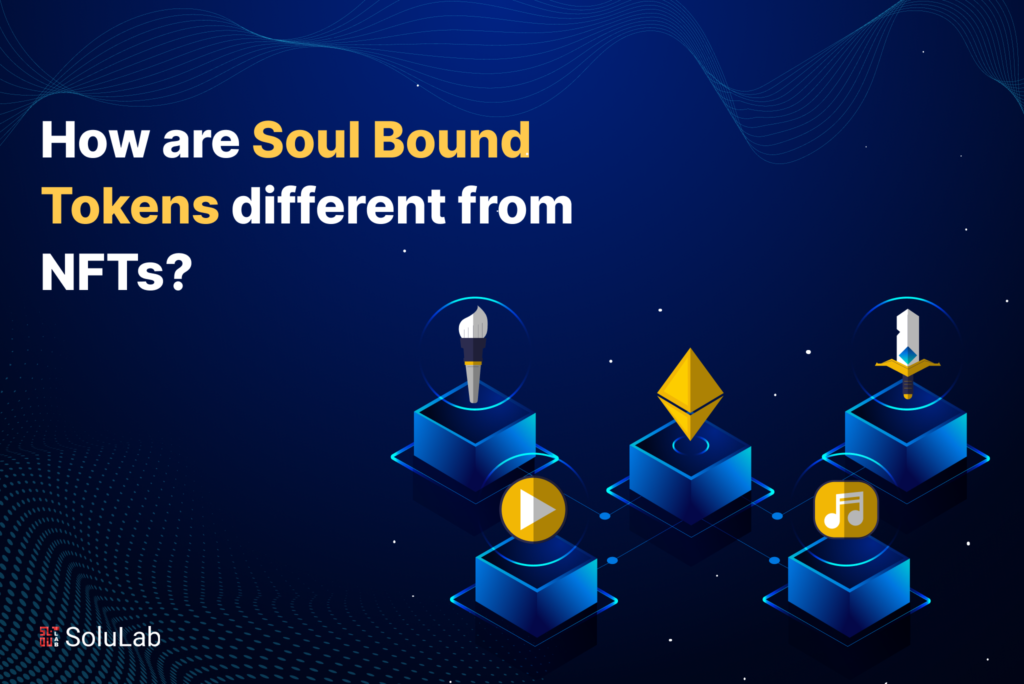
Non-fungible tokens (NFTs) and soulbound tokens (SBTs) represent two groundbreaking models for digital assets built on blockchain technology. Though related in some aspects, key differences set them apart in purpose and design.
NON-Fungible and Soul Bound Tokens – An Introduction
Non-fungible tokens (NFTs) allow provable digital ownership of unique items like art, collectibles, and more. Each NFT can be bought and sold freely to anyone willing to pay the market price. In contrast, the Soul Bound tokens could represent personal credentials or achievements that cannot be sold or transferred.
Proposed in 2022, SBTs are non-transferable tokens tied cryptographically to a holder’s identity. Unlike NFTs, they have no monetary value and cannot be traded or sold to others. Instead, they immutably log credentials, reputation, memberships, and other non-monetary attributes bound to the holder.
Related: Top 10 Layer 1 Blockchains in 2025
NFTs – Unique Collectible Assets
NFTs are crypto assets that represent ownership of unique digital items like art, videos, collectibles, virtual land, etc. Each NFT token is indivisible and distinguishable from other NFTs, stored immutably on a blockchain.
NFT ownership is transferable, allowing trading on marketplaces. Popular applications include digital art sales, metaverse assets, gaming items, and more.
Popular Use Cases For NFTs
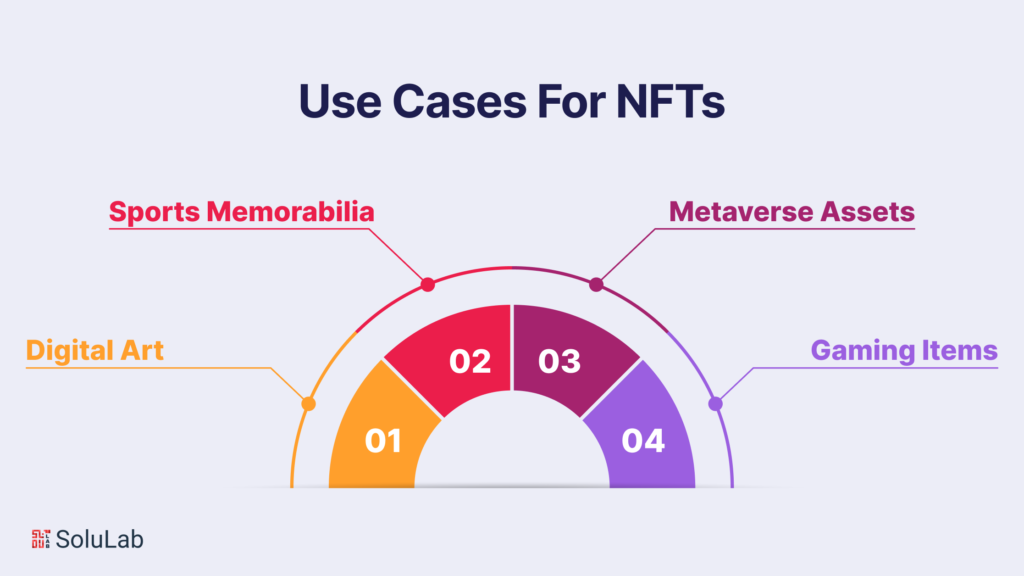
-
Digital Art
In 2021, Beeple’s collage artwork “The First 5000 Days” sold at Christie’s as an NFT for a record $69M. The buyer received a digital certificate of ownership with a unique ID code. NFTs are allowing digital art to be collected and traded like physical pieces.
-
Sports Memorabilia
Platforms like NBA Top Shot allow fans to buy, sell, and trade limited-edition digital cards of basketball highlights. Each card is a unique NFT with value based on scarcity and demand. Sports teams are turning memorable plays into collectible NFT items.
-
Metaverse Assets
In metaverse virtual worlds, NFTs can represent land parcels, avatars, clothing, and other virtual assets. The ownership grants you status, customization, and more. Brands like Adidas are already launching Metaverse NFT gear.
-
Gaming Items
NFTs are being integrated into games to represent in-game assets like characters, weapons, real estate, etc. NFT Ownership is provable on the blockchain while retaining transferability. This turns ephemeral digital items into tradable collectibles.
NFTs are unlocking new potential across digital collectibles and online experiences. As ownership layers for unique assets, they are evolving how we interact digitally.
SBTs – Non-Transferrable Credentials
SBTs are non-transferrable tokens that represent credentials, achievements, memberships, etc. tied to a holder’s identity. For instance, an SBT could represent graduation from an academic program.
Unlike NFTs, SBTs are non-tradable and soulbound to a wallet address.
This immutably records credentials on-chain while preventing fraudulent transfers. Use cases include certifications, loyalty rewards, community memberships, and more.
Popular Use Cases for Soulbound Tokens
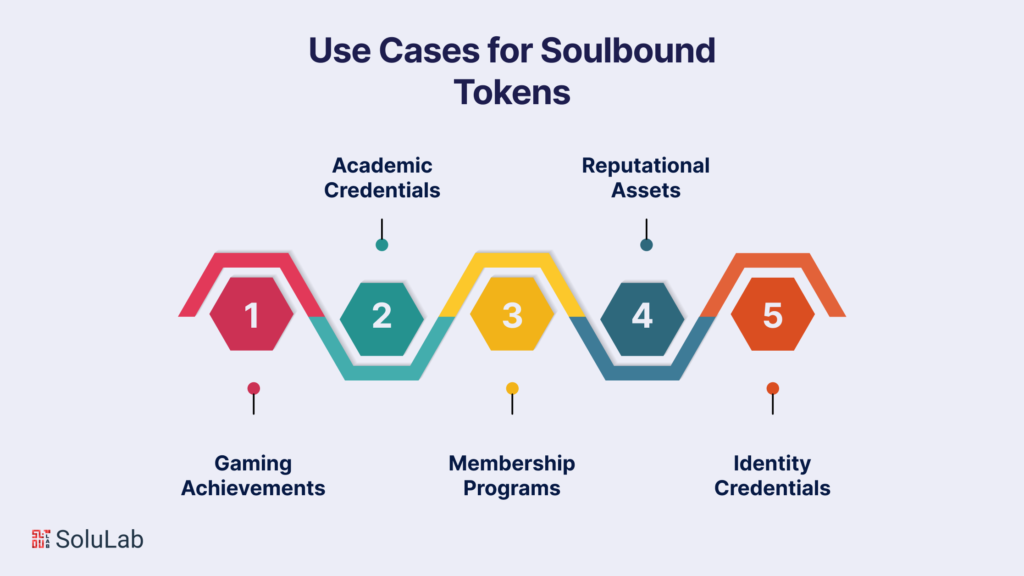
Soulbound tokens are non-transferable digital assets tied to a holder’s identity. Here are some ways SBTs are being utilized:
-
Gaming Achievements
In games like League of Legends, SBTs represent prestige skins and other achievements that get permanently bound to a player’s account once earned through skill. This verifies gaming accomplishments. Comparing NFT vs SFT, SBTs focus on non-transferable, skill-based rewards, while NFTs can be traded.
-
Academic Credentials
SBTs can represent digital diplomas, certificates, and degrees in education. Binding credentials to a student’s ID will make them non-transferable, preventing fraud. In the debate of NFT vs SFT, SBTs serve as non-fungible, permanent proof of achievement, unlike NFTs, which are typically transferable.
-
Membership Programs
Loyalty programs can issue SBTs to represent different membership tiers and perks. These tokens prove membership status while restricting transfers to unauthorized users.
-
Reputational Assets
SBTs can demonstrate reputation-based achievements like being a top contributor on GitHub or a ‘most-liked’ influencer on social media. The non-transferable tokens immortalize reputational assets.
-
Identity Credentials
Users can bind SBTs to online accounts, emails, domains, and other digital properties probably belonging to them. This verifies identity and ownership in a portable way.
NFT vs. SBT: Key Differences in Transferability
Non-fungible tokens (NFTs) and soulbound tokens (SBTs) are two digital asset models built on blockchain technology. On the surface, they may seem similar, but key variations set them apart.
The core difference is transferability. NFTs are transferable assets representing digital ownership. Their value stems from tradability on open markets. SBTs are non-transferable and tied permanently to a holder’s identity. Their value is not monetary but rather utility-driven.
NFTs enable provable digital ownership of unique items like art, collectibles, virtual land, etc. Their transferability facilitates trading and monetary gains.
SBTs represent non-transferable credentials like certifications, achievements, and memberships. They immutably log credentials on-chain while restricting fraudulent transfers.
While NFTs focus on tradable digital property, SBTs act as reputation-building verifiable credentials. Together they expand blockchain-based asset models – NFTs for collectibility and SBTs for reputability.
Can you purchase soulbound tokens?
Soulbound tokens are not meant to be bought or sold and don’t have a market value. Instead, they are given to represent an achievement by individuals or other entities.
The NFT innovation platform Idexo claims that it introduced the first soulbound token in April 2021, even before the concept had an official name. These non-transferable Early Adopter NFTs were created on the Balance Smart Chain and are linked to the holder’s Telegram username.
Idexo has also recently included SBTs in its software development kit, allowing the community to create SBTs on different blockchain platforms.
The Future of Soulbound Tokens
Soulbound tokens and working are a novel form of non-fungible tokens (NFT) that are non-transferable and designed to represent an individual’s credentials, affiliations, and commitments. As such, they hold the potential to revolutionize a wide range of industries and applications.
Future Use Cases
One of the most exciting aspects of SBTs is their vast potential for future use cases. In addition to the examples mentioned in the prompt, such as driver’s licenses, university degrees, and proofs of age, SBTs could also be used for NFT vs SFT comparisons, where non-transferable tokens like SBTs could serve distinct roles, verifying achievements and credentials, while NFTs remain transferable assets.
- Professional certifications
- Membership in organizations
- Voting rights
- Access to exclusive content or services
- Reputation and trust management
- Decentralized autonomous organizations (DAOs)
Evolution of the Technology
As SBTs mature, we can expect to see them evolve in several ways. For example, we may see the development of new standards and protocols for issuing, managing, and verifying SBTs. We may also see the emergence of new applications that leverage the unique properties of SBTs.
One particularly interesting area of exploration is the potential for SBTs to be combined with other technologies, such as zero-knowledge proofs(ZKPs). ZKPs allow individuals to prove that they possess certain information without revealing the information itself.
This could be used to create SBTs that are both privacy-preserving and verifiable.
Integration with Other Technologies
In addition to ZKPs, SBTs could also be integrated with other technologies such as artificial intelligence (AI) and machine learning (ML). This could enable the creation of SBTs that are adaptive and can learn over time. For example, an SBT that represents a person’s skills and experience could be updated automatically as the person gains new skills or takes on new roles.
Take Away
While NFTs cater to transferrable digital ownership, SBTs focus on non-transferrable credentials bound to a holder. Together, they expand the scope of blockchain-based digital asset models – NFTs for tradable collectibles and SBTs for non-fungible credentials. The future of soulbound tokens is bright. As the technology matures, we can expect to see them play an increasingly important role in a wide range of applications. SBTs have the potential to create a transparent, and equitable society.
Unlock the future of digital ownership with SoluLab. In a world where NFTs represent transferable assets, Soul Bound Tokens (SBTs) shine as the pioneers of non-transferrable credentials, forever tied to their rightful holders. Together, they redefine the landscape of blockchain-based digital assets, offering NFTs for collectibles and SBTs for unique, non-fungible credentials. The horizon of soulbound tokens is incredibly promising. As this technology matures, we anticipate its integral role in a diverse range of applications, promising transparency and equity in our digital society. Join us in discovering the boundless potential of SBTs and the innovative future they hold. SoluLab – Shaping the Future of Digital Ownership. Contact SoluLab today to embark on this exciting journey into the future of digital ownership. SoluLab – Shaping the Future of Digital Ownership.
FAQs
1. What exactly are Soul Bound Tokens (SBTs)?
Soul Bound Tokens, or SBTs, are unique blockchain-based digital credentials that are distinct from NFTs. Unlike NFTs, SBTs are non-transferrable and are permanently associated with the holder, offering a secure and immutable record of ownership or identity.
2. How do SBTs differ from NFTs in terms of use cases?
NFTs are typically used for tradable digital collectibles, while SBTs are designed for non-fungible credentials, making them suitable for applications like academic certificates, licenses, or any scenario where a non-transferrable, verifiable identity is crucial.
3. Are SBTs a part of the same blockchain ecosystem as NFTs?
Yes, both SBTs and NFTs operate within blockchain ecosystems. However, they serve distinct purposes, with NFTs offering transferable digital ownership and SBTs providing non-transferrable, immutable credentials.
4. What is the future potential of Soul Bound Tokens?
As SBT technology continues to evolve, it holds the promise of enhancing transparency and equity in various applications, including educational and governmental sectors, by ensuring the security and authenticity of credentials and identities.
5. Can SBTs coexist with NFTs in a digital ecosystem?
Absolutely, SBTs and NFTs can coexist harmoniously within the same blockchain environment, each serving its unique purpose. This coexistence broadens the possibilities for innovative and diversified applications in the digital asset landscape.




